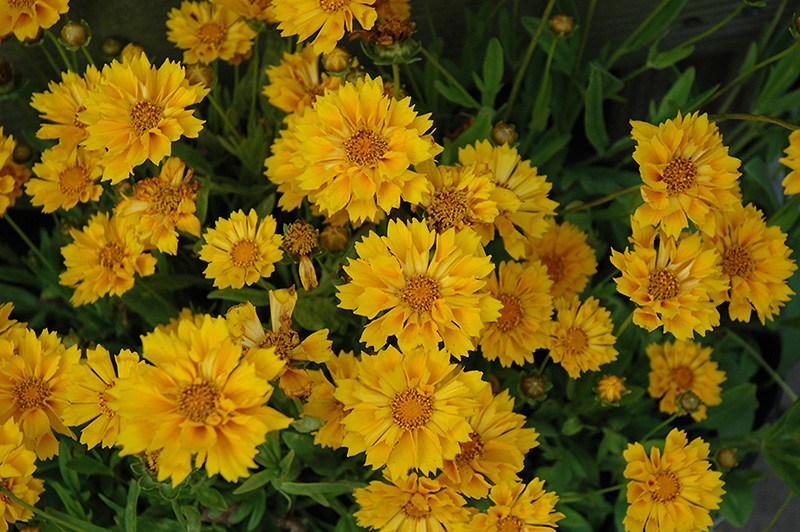VANDERMEER
PLANT LIBRARY
Find the perfect plant for your space by browsing through this extensive selection that we typically carry every year.
This library is for information purposes only.
Jethro Tull Tickseed
Coreopsis 'Jethro Tull'
Height: 18 inches
Spread: 18 inches
Sunlight:
![]()
Hardiness Zone: 4a
Other Names: Large Flowered Tickseed, Threadleaf Coreopsis
Description:
Splendid fluted petals with cheery, daisy-like yellow flowers and a central gold disk; tolerant of pests and drier soils; thriving in sandy and rocky soils; coreopsis needs good drainage
Ornamental Features
Jethro Tull Tickseed is smothered in stunning yellow daisy flowers with gold eyes and curiously fluted yellow tips at the ends of the stems from early to mid summer. The flowers are excellent for cutting. Its ferny leaves remain emerald green in colour throughout the season.
Landscape Attributes
Jethro Tull Tickseed is an open herbaceous perennial with a mounded form. It brings an extremely fine and delicate texture to the garden composition and should be used to full effect.
This is a relatively low maintenance plant, and is best cleaned up in early spring before it resumes active growth for the season. It is a good choice for attracting bees and butterflies to your yard, but is not particularly attractive to deer who tend to leave it alone in favor of tastier treats. It has no significant negative characteristics.
Jethro Tull Tickseed is recommended for the following landscape applications;
- Mass Planting
- Border Edging
- General Garden Use
Planting & Growing
Jethro Tull Tickseed will grow to be about 18 inches tall at maturity, with a spread of 18 inches. Its foliage tends to remain dense right to the ground, not requiring facer plants in front. It grows at a medium rate, and under ideal conditions can be expected to live for approximately 10 years. As an herbaceous perennial, this plant will usually die back to the crown each winter, and will regrow from the base each spring. Be careful not to disturb the crown in late winter when it may not be readily seen!
This plant should only be grown in full sunlight. It does best in average to evenly moist conditions, but will not tolerate standing water. It is not particular as to soil pH, but grows best in poor soils. It is somewhat tolerant of urban pollution. This particular variety is an interspecific hybrid. It can be propagated by division; however, as a cultivated variety, be aware that it may be subject to certain restrictions or prohibitions on propagation.





